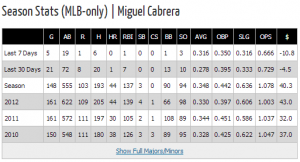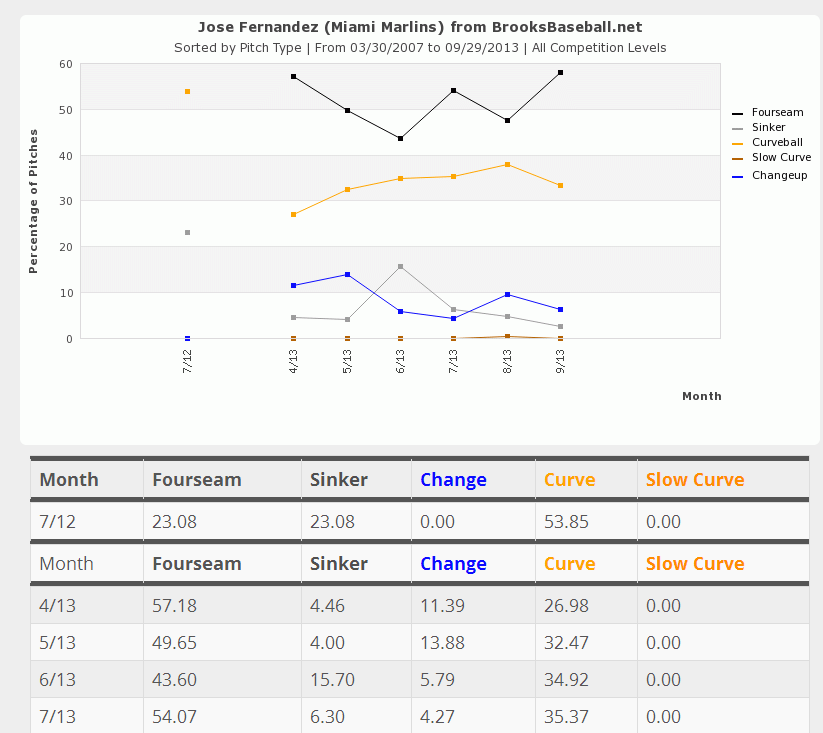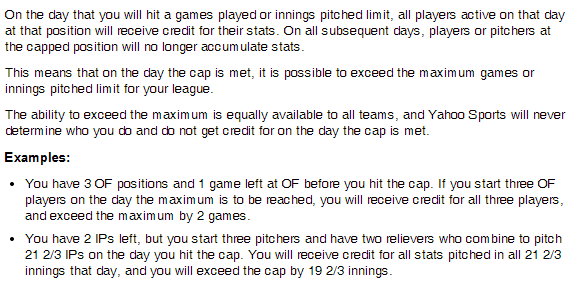Wow, I screwed up.
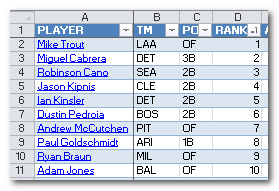 I recently finished my first rankings and projections for the 2014 season. And after I sent all the projection information into the little black box, it kicked out some really crazy looking results.
I recently finished my first rankings and projections for the 2014 season. And after I sent all the projection information into the little black box, it kicked out some really crazy looking results.
Cano, Kipnis, Kinsler, Pedroia right in the heart of the first round? Nice rankings, bonehead.
Here’s What I Did Wrong
Let me share my failure so you can avoid making the same mistake I did. You might recall that the rankings approach I use includes an adjustment for “replacement level”. It’s essentially a way to capture positional scarcity.
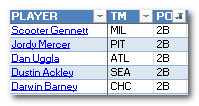 I usually assume a standard rotisserie format when creating rankings, so for a 12-team league starting 2B, SS, and MI, I assume “replacement level” is right around the 17 – 21st ranked players at each position (12 2B starters plus about 6 more drafted to play MI). When I looked at this neighborhood of players, I came up with Scooter Gennett, Jordy Mercer, Dan Uggla, Dustin Ackley, and Darwin Barney as “Replacement Level”. A sad cast of characters. Darwin Barney? How did I not catch that?!?!
I usually assume a standard rotisserie format when creating rankings, so for a 12-team league starting 2B, SS, and MI, I assume “replacement level” is right around the 17 – 21st ranked players at each position (12 2B starters plus about 6 more drafted to play MI). When I looked at this neighborhood of players, I came up with Scooter Gennett, Jordy Mercer, Dan Uggla, Dustin Ackley, and Darwin Barney as “Replacement Level”. A sad cast of characters. Darwin Barney? How did I not catch that?!?!
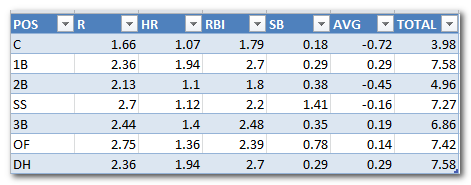 I then went the next step and included this 2B replacement level measurement in the replacement level table for all positions (see the table image above). It’s very clear that something is out of whack with 2B. With the exception of catcher, which we know lacks in offensive production (and the effect is worsened for two catcher leagues), all the other positions are within 0.7 standings gain points of each other.
I then went the next step and included this 2B replacement level measurement in the replacement level table for all positions (see the table image above). It’s very clear that something is out of whack with 2B. With the exception of catcher, which we know lacks in offensive production (and the effect is worsened for two catcher leagues), all the other positions are within 0.7 standings gain points of each other.
How I Assign Players’ Positions
It becomes very difficult to rank players that qualify at multiple positions. I haven’t found an effective way to calculate it yet. So I assign players to only one position, and I choose the position that is “weakest”. Assigning a player to the weakest position gives them the most value, so I think it’s a reasonable shortcut to deal with players like this.
What I Screwed Up
I failed to account for position changes for several very solid second base options. Specifically I still had Matt Carpenter (1B), Jedd Gyorko (3B), Martin Prado (OF), Jurickson Profar (SS), and Anthony Rendon (3B) listed at other positions. But clearly all should qualify for 2B eligibility in 2014.
And I essentially failed twice, because there are at least two other solid fantasy contributors that I still had listed as SS, but would conceivably qualify at 2B. Both Ben Zobrist and Jed Lowrie fit that bill. If 2B has such a low replacement level, players that qualify at 2B and SS to be moved to the 2B listing. Any good fantasy player would realize the weak 2B market and draft these multi-positional players to fill the void.
Replacement Level Needed To Move
So when I calculated replacement level and looked at those players ranked around the 17-21 spot for 2B, I was really looking at players 22-26.
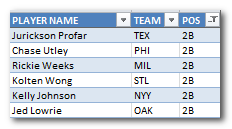 After adding the missing second basemen, spots 17-21 shift to become Jurickson Profar, Chase Utley, Rickie Weeks, Kolten Wong, and Kelly Johnson. Then below Jed Lowrie and Marco Scutaro come in at 22 and 23. That’s more like it!
After adding the missing second basemen, spots 17-21 shift to become Jurickson Profar, Chase Utley, Rickie Weeks, Kolten Wong, and Kelly Johnson. Then below Jed Lowrie and Marco Scutaro come in at 22 and 23. That’s more like it!
Calculating replacement level off of these players shifts the ranking calculations of every 2B, and here are the updated top 16 rankings:
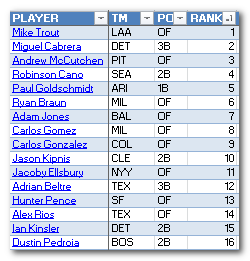
Wow, what a HUGE difference. The puts the 2B more in line with what you would expect and it also has a rippling effect on other players too. Goldschmidt moves from eighth to a much more reasonable fifth.
Lessons Learned
I need to incorporate a much stronger “reasonableness check” into my rankings and not blindly trust that I entered every formula, every Excel sort, every player position, and every player ID correctly.
Don’t make the same mistake as me!
But in the end, this was a very interesting exercise that showed me just how dramatic of an effect position scarcity can play in rankings (especially if it’s done incorrectly). You always know it’s there, but it’s difficult to quantify if you don’t go searching for it.
I was just off by five or six players in determining replacement level. If it only takes a handful of players to have this big of an effect on player valuation, think about what position changes and injuries during the season can theoretically mean. Something to keep in mind for in season trading…
Thanks for reading. Don’t make unsmart mistakes like me.
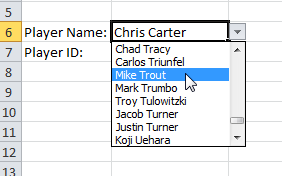 Said another way, instead of linking the web query to player ID “
Said another way, instead of linking the web query to player ID “